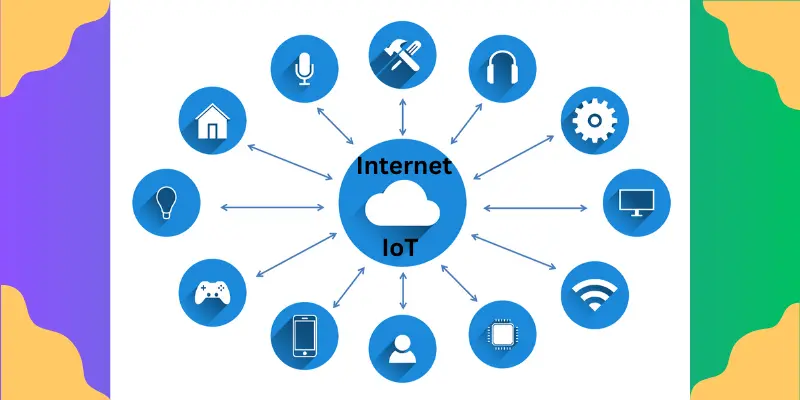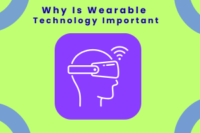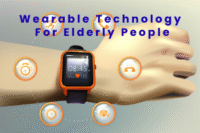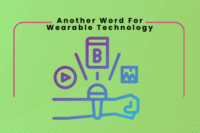Internet and Internet of Things
Published: 03 Mar 2025
The Internet is like a giant highway where information travels between computers, phones, and people. It’s how we send emails, watch videos, and browse websites. Think of it as a massive library or a global chatroom that connects everyone.
The Internet of Things (IoT), on the other hand, takes this idea further. It’s like adding traffic lights, cars, and even street signs to that highway. Instead of just connecting people, IoT connects everyday objects—like your fridge, thermostat, or even your shoes—to the Internet. If you’re curious to learn more about how IoT works, check out this detailed article on the Internet of Things.
Imagine your coffee maker talking to your alarm clock to brew a fresh cup as soon as you wake up. That’s the magic of IoT—it turns ordinary things into smart helpers, making life easier and more connected. While the Internet links people, IoT links the world around us, creating a web of smart, talking devices. Cool, right?
In this blog, we will discuss the major differences between the internet and internet of things.

Difference Between Internet and Internet of Things
Internet vs Internet of Things are related but serve different purposes. Here’s a simple and clear comparison chart in table format:
| Aspect |
|---|
|
What They Connect How They Work Purpose Examples Key Difference |
| Internet |
|---|
|
Connects people and computers. Uses computers, servers, and routers to share data. Focuses on communication and information sharing. Websites, apps, emails, social media. Connects people. |
| Internet of Things (IoT) |
|---|
|
Connects everyday objects and devices. Uses sensors, software, and networks to share data. Focuses on automation and making life easier. Smart home devices, wearables, smart city systems. Connects things. |
How the Internet Works
The Internet is a network of computers that share information. It connects devices like phones, laptops, and servers, allowing them to send and receive data. For example, when you send an email or load a website, your device communicates with other computers to get the job done.
The Internet relies on a few main components: servers, routers, and your devices. Servers store and share data, routers direct traffic, and your devices (like phones or laptops) request and display information. For instance, when you open a webpage, your phone (device) talks to a server to fetch and show the content.
What is IoT, and How Does It Work?
The Internet of Things (IoT) is all about connecting everyday objects to the Internet. These objects, like fitness trackers or smart speakers, have sensors that collect and share data. For example, a fitness tracker counts your steps and sends that information to your phone.
IoT devices use Wi-Fi, Bluetooth, or cellular networks to connect to the Internet. This lets them send and receive data. For instance, a smart speaker like Alexa uses Wi-Fi to play music or answer your questions.
The Internet connects people, while the Internet of Things (IoT) connects things. Together, they make life smarter, easier, and more efficient. From smart homes to wearable gadgets, these technologies are changing how we live.
In the coming years, more devices will become “smart.” Imagine self-driving cars or healthcare tools that monitor your health in real-time. The possibilities are endless!
What’s your favorite IoT device? Share in the comments! If you’re new to IoT, start small with something like a smart bulb and see how it simplifies your daily routine. Give it a try—you might love it!
Internet of Everything vs Internet of Things
Here’s another way to design the comparison table for Internet of Everything (IoE) vs Internet of Things (IoT):
| Feature | IoT | IoE |
| Definition | Connects devices and sensors to the Internet. | Connects things, people, processes, and data. |
| Purpose | Makes devices smart and automated. | Creates smarter systems and solutions. |
| Example | Smartwatch tracking your steps. | Smart city optimizing traffic and energy use. |
| Scope | Limited to devices and sensors. | Broader, includes people and processes. |
| Key Difference | Focuses on things. | Focuses on everything (things + people). |
Internet of Things Meaning in Urdu
کا مطلب ہے روزمرہ کی چیزوں کو انٹرنیٹ سے جوڑنا تاکہ وہ ڈیٹا اکٹھا کر سکیں اور آپس میں معلومات شیئر کر سکیں۔ مثال کے طور پر، ایک اسمارٹ واچ جو آپ کے قدم گنتا ہے اور یہ ڈیٹا آپ کے فون پر بھیجتا ہے
اس کا مقصد زندگی کو آسان اور زیادہ موثر بنانا ہے۔ جیسے اسمارٹ گھر کے آلات جو آپ کے موبائل سے کنٹرول ہوتے ہیں

- Be Respectful
- Stay Relevant
- Stay Positive
- True Feedback
- Encourage Discussion
- Avoid Spamming
- No Fake News
- Don't Copy-Paste
- No Personal Attacks

- Be Respectful
- Stay Relevant
- Stay Positive
- True Feedback
- Encourage Discussion
- Avoid Spamming
- No Fake News
- Don't Copy-Paste
- No Personal Attacks



